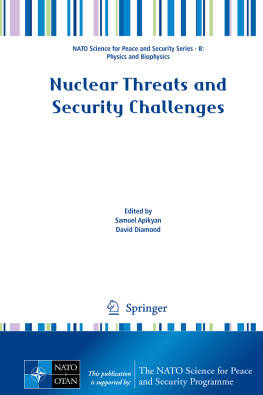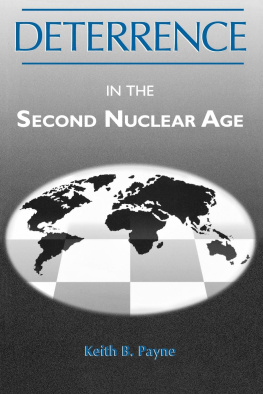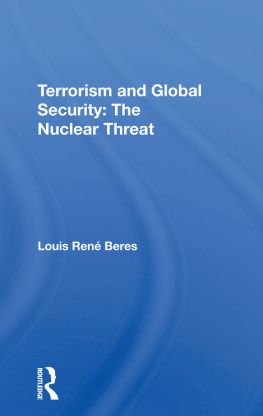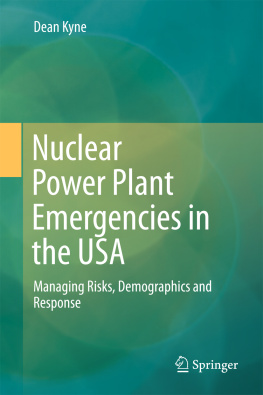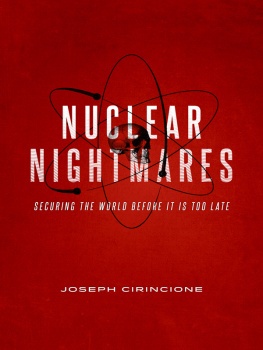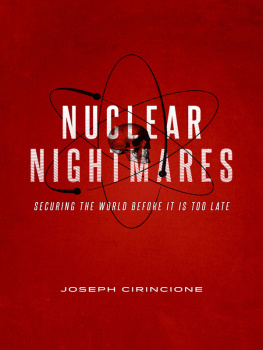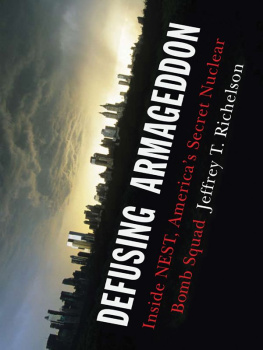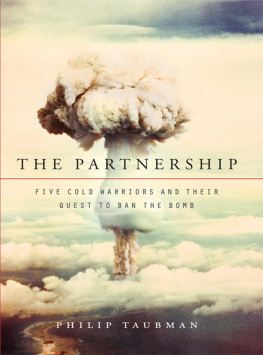Springer Science+Business Media Dordrecht 2015
Samuel Apikyan and David Diamond (eds.) Nuclear Threats and Security Challenges NATO Science for Peace and Security Series B: Physics and Biophysics 10.1007/978-94-017-9894-5_1
1. GAO: Two Decades Evaluating the Impact and Effectiveness of U.S. Nuclear and Radiological Material Security Programs
Abstract
Since the early 1990s, the Government Accountability Office (GAO), the investigative arm of the U.S. Congress, has been reporting on the impact and efficiency of numerous federal programsthat have collectively cost U.S. taxpayers billions of dollarsto reduce the risks posed by vulnerable nuclear and radiological materials worldwide. GAOs assessments have focused on, among other things, the Department of Energys (DOE) Material Protection, Control and Accounting program in Russia and the Global Threat Reduction Initiative that has been implemented in more than 100 countries. More recently, GAO has assessed federal agencies efforts and strategies to implement the Presidents initiative to secure all vulnerable material worldwide within a 4-year period. A significant and growing part of GAOs portfolio, particularly after September 11, focuses on radiological material security, including federal preparedness for and response to a terrorist attack involving either a radiological dispersal device or improvised nuclear device attack in the United States.
An independent, nonpartisan agency, GAOs mission is to support the Congress in meeting its constitutional responsibilities and to help improve the performance and ensure the accountability of the federal government for the benefit of the American people. GAO provides the Congress with timely information that is objective, fact-based, nonpartisan, nonideological, fair, and balanced. Within GAO, the U.S. and International Nuclear Security and Cleanup mission group covers a wide range of nuclear issues that include nuclear nonproliferation; nuclear and radiological smuggling and terrorism; and special nuclear material production, consolidation, and storage. This paper provides an overview of the recent nuclear nonproliferation work that GAO has undertaken on behalf of the Congress, focusing on highlights of key reports, major findings, recommendations, and impact on federal agencies programs.
1.1 Introduction
One of the most serious threats facing the United States and other countries is the possibility that other nations or terrorist organizations could steal a nuclear warhead or nuclear weapon-usable materials from poorly secured stockpiles around the world, or that nations could divert nuclear material intended for peaceful purposes to the development of nuclear weapons. Of great concern is that terrorists could fashion a crude nuclear bomb made from either highly enriched uranium (HEU) or plutonium into an improvised nuclear device. Such a device would create an explosion producing extreme heat, powerful shockwaves and intense radiation that would be immediately lethal to individuals within miles of the explosion, as well as radioactive fallout over thousands of square miles. Nonproliferation experts estimate that a successful improvised nuclear device could devastate the heart of a medium-sized U.S. city and could cause hundreds of thousands of deaths and injuries, as well as pose long-term cancer risks to those exposed to the radioactive fallout.
Radiological material also poses a significant security threat to the United States and the international community. Radiological materialsuch as cobalt-60, cesium-137, and iridium-192is encapsulated or sealed in metal to prevent its dispersal and is commonly called a sealed radiological source. Sealed radiological sources are used worldwide for many legitimate purposes, such as medical, industrial, and agricultural applications. The total number of these sources in use worldwide is unknown because many countries do not systematically account for them. If certain types of these sources were obtained by terrorists, they could be used to produce a simple and crude but potentially dangerous weaponknown as a radiological dispersion device, or dirty bomb. Although experts believe that a dirty bomb would result in a limited number of deaths, it could have severe economic consequences. Depending on the type, amount, and form, the dispersed radiological material could cause radiation sickness for people nearby and produce serious economic and psychological disruption associated with the evacuation and subsequent cleanup of the contaminated area.
1.2 The Post-Cold War Era
GAO has been reporting on these and related nonproliferation and nuclear security issues since the 1990s. In the years following the end of the Cold War, GAOs work in this area focused on, among other things, U.S. nuclear engagement with the former Soviet Union. For example, reports from that time addressed the status of U.S. efforts to improve nuclear material controls in the newly independent states of the former Soviet Union, the status of transparency measures for the U.S. purchase of Russian highly enriched uranium, and DOEs efforts to mitigate the risk to nonproliferation goals of unemployed former Soviet Union weapons scientists. Below are two examples of this work.
Status of U.S. Efforts to Improve Nuclear Material Controls in Newly Independent States : In 1996, GAO reviewed U.S. efforts to strengthen controls over nuclear materials in the newly independent states of the former Soviet Union. The Soviet Union produced about 1,200 metric tons of highly enriched uranium and 200 metric tons of plutonium, with much of this material outside of nuclear weapons and highly attractive to theft. GAO found that, at the time, the newly independent states may not have had accurate and complete inventories of the material they inherited and that the breakdown of Soviet-era material protection, control, and accounting (MPC&A) systems may have left the newly independent states unable to counter the threat of theft. In addition, GAO found that nuclear facilities could not quickly detect and localize nuclear material losses or detect unauthorized attempts to remove nuclear material, and seizures of direct-use material in Russia and Europe had increased concerns about theft and diversion. GAO also found that U.S. agencies had begun efforts to help the newly independent states improve their MPC&A systems for direct-use material, as well as cooperation with Russias nuclear regulatory agency to develop a national MPC&A regulatory infrastructure.
Uncertainties with Implementing IAEA s Strengthened Safeguards System : In 1998, GAO reviewed changes IAEA was undertaking at the time to strengthen its safeguards program by introducing advanced safeguards techniques under its existing safeguards agreements.
1.3 The Post-September 11 Era
Following the terrorist attacks of September 11, 2001, U.S. and international experts raised concerns that unsecured radiological sources were vulnerable to theft and posed a significant security threat to the United States and the international community. In 2003, GAO issued a number of reports focusing on U.S. and international efforts to secure radiological sources and recover unwanted sources.
U.S. and International Assistance Efforts to Control Sealed Radiological Sources : In 2003, GAO reviewed the number of sealed sources in use worldwide, as well as those that have been lost, stolen, or abandoned. GAO found that the precise number of sealed sources is unknown because many countries do not systematically account for them. However, at the time, nearly ten million sealed sources existed in the United States and the 49 countries responding to a GAO survey. There is also limited information about the number of sealed sources that have been lost, stolen, or abandoned, but it was estimated to be in the thousands worldwide. Furthermore, many of the most vulnerable sealed sources that could pose a security risk were located in the countries of the former Soviet Union. GAO recommended in the report, among other things, that the Secretary of Energy take the lead in developing a comprehensive plan to strengthen controls over other countries sealed sources.

